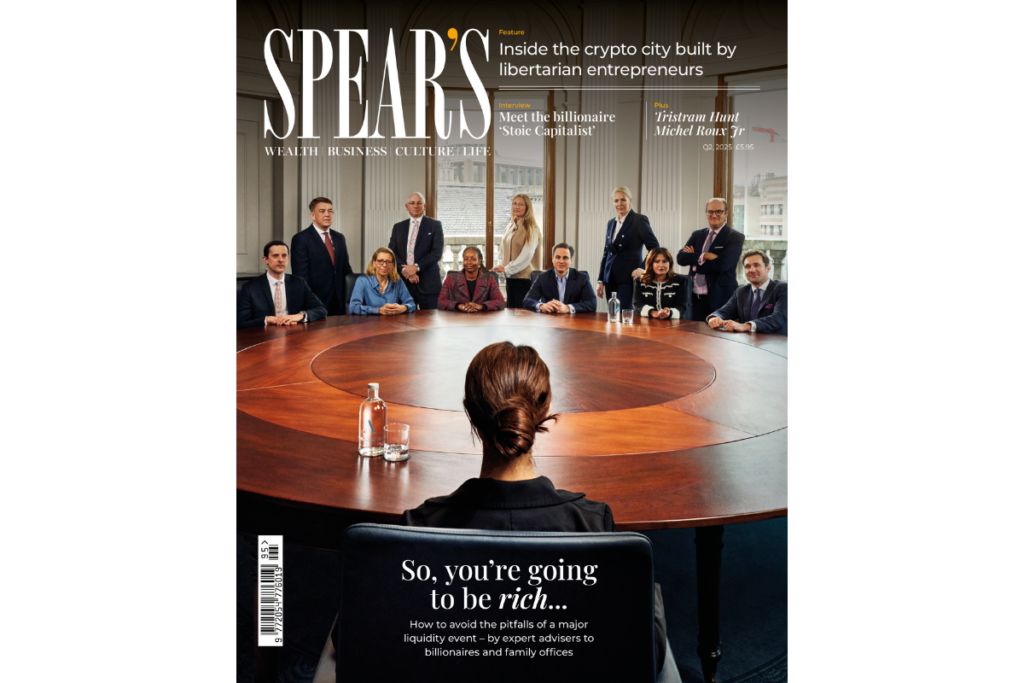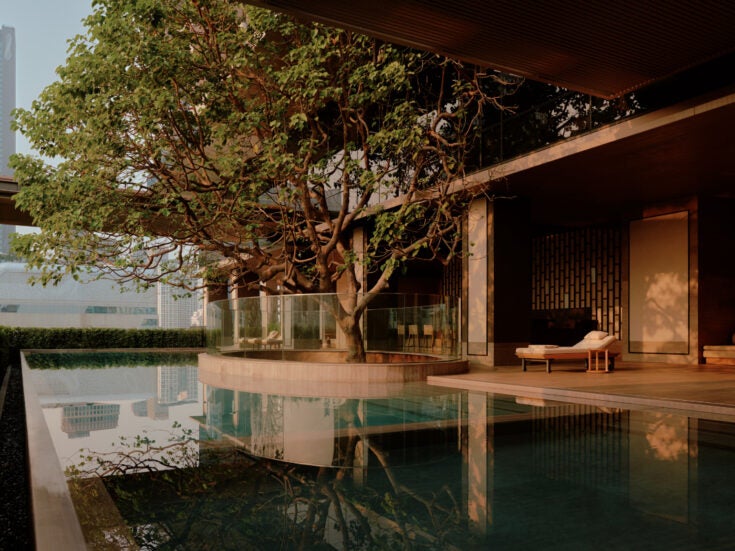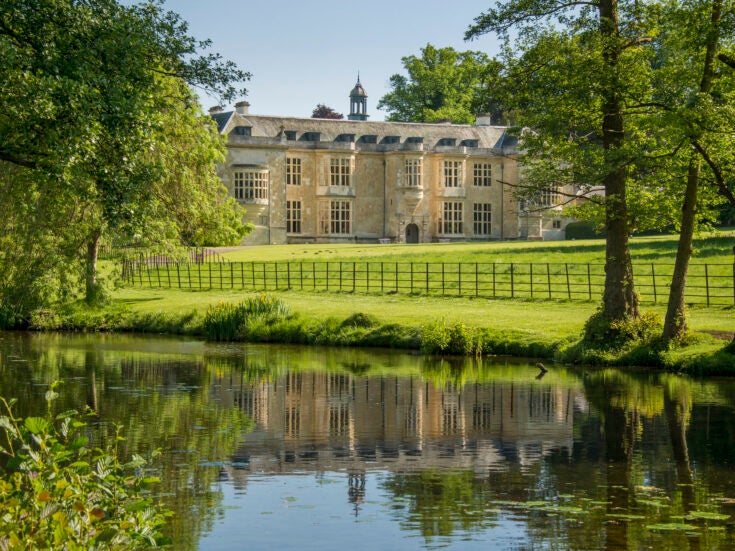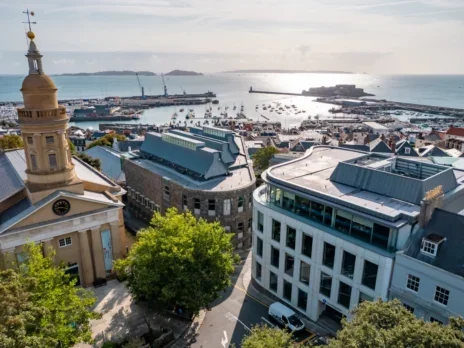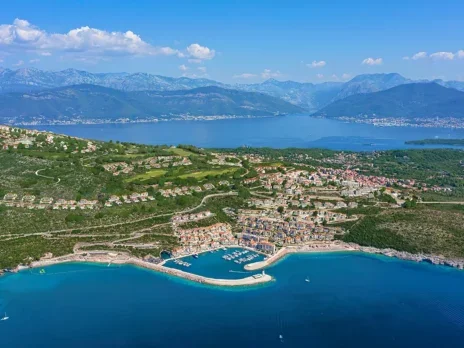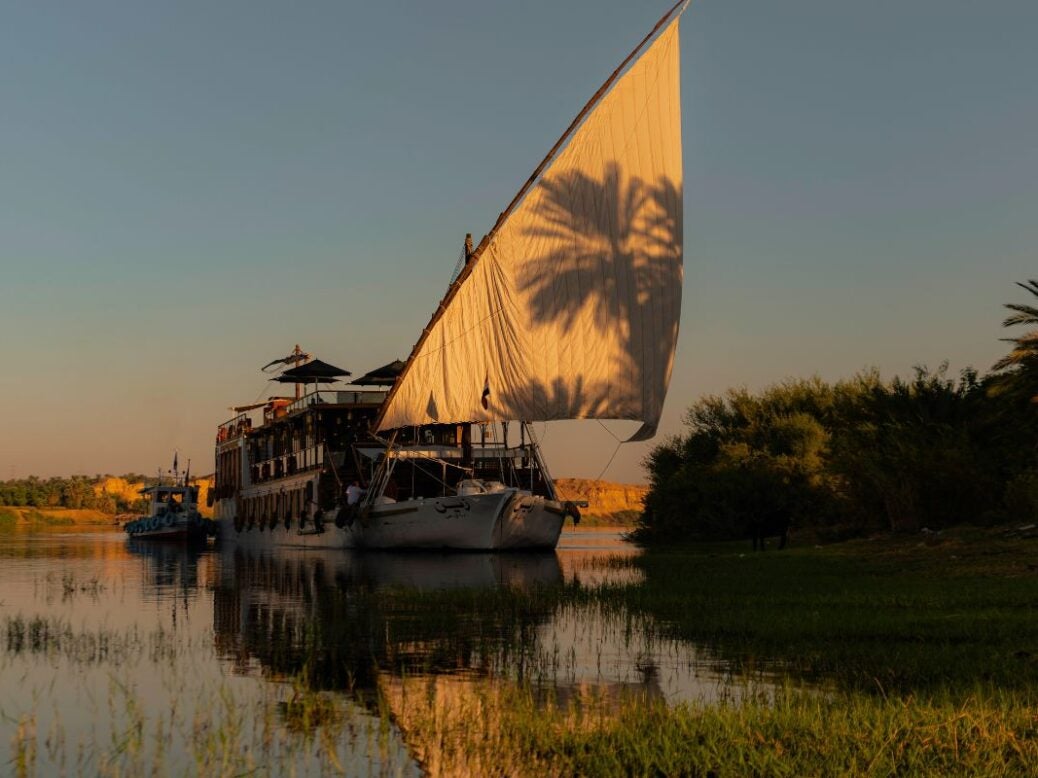
The Arabic call to prayer echoes across Cairo, rising through the stone minarets that punctuate the city’s skyline. ‘It’s a reminder to our people to surrender the distractions and pleasures of this world in pursuit of the afterlife,’ my companion, an Egyptologist, tells me as we weave past the street vendors abandoning their posts at the local bazaar to make their way to the mosque.
An unyielding belief in eternity and the afterlife has long connected modern-day Egypt with its ancient inhabitants. From the gilded tombs of its pharaohs to the painted columns of timeworn temples, eternity was etched into stone, inscribed with hieroglyphics and woven into the very fabric of the country’s history.
[See also: Dior and Dion at Nammos Dubai: Visiting the world’s highest-earning restaurant]
And there’s never been a better time for visitors to examine this rich tapestry, after the Grand Egyptian Museum (GEM) finally opened its doors late last year.
Located on a 500,000-square-metre site near the foothills of the Great Pyramids of Giza, the GEM is said to be the largest archaeological centre in the world; a project almost two decades in the making.

It was designed by Heneghan Peng Architects, an Irish firm that triumphed over 1,557 competitors in a contest hosted by Egypt’s Ministry of Culture, with a construction cost estimated at approximately $1 billion — 75 per cent of which was loaned by the Japanese government. Following delays caused by regional conflicts and the Coronavirus pandemic, the museum is slated to be fully up and running by July of this year, some 12 years after its originally planned debut.
[See also: ‘The island was a love story’: Richard Branson on his private Caribbean retreat, Necker]
Set to house over 100,000 artefacts dating back over the past 700,000 years, the museum is projected to boost Egypt’s tourism by an additional five million visitors annually. Among the 12 galleries nestled within the space, the most eagerly awaited is that of Tutankhamun, which will see the contents of the young ruler’s tomb reunited for the first time in over a century since its discovery by Howard Carter. Previously scattered across various museums, the aim of the Tutankhamun exhibition — alongside the wider GEM project — is to proudly showcase and pay homage to the country’s heritage.
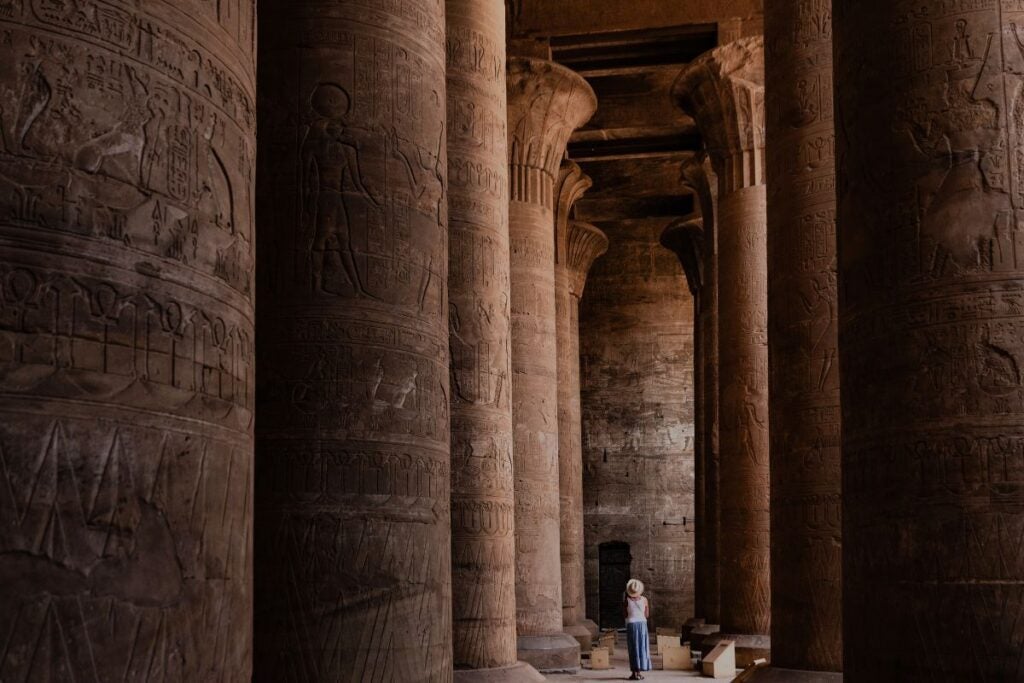
‘When the ancient Egyptians built statues, tombs, temples and anything else concerning the afterlife, they wanted them to last forever,’ my tour guide Hesham Abdulla — courtesy of luxury travel firm, Abercrombie & Kent — tells me as we stand at the feet of an 11-metre-high statue of Ramses II (estimated to be over 3,000 years old) during my preview of the museum. ‘It’s why, as a civilisation, we have so many artefacts to showcase. The Romans and Greeks prioritised beauty but the Egyptians prized durability.’
[See also: A Roman Renaissance: Six Senses Rome redefines urban luxury]
As spectacular as the new museum is, it is not the final word in Egyptian history. The cities of Luxor and Aswan — where many of the artefacts displayed at the GEM were found — are also home to some of the world’s most significant archaeological discoveries, from the Valley of the Kings (the burial site of more than 60 royal figures and Pharaohs), to the Karnak Temple (estimated to have been built from around 2000 BC in honour of the chief deity, Amun-Ra).
Aswan and Luxor are accessible by plane but I make the journey north aboard the luxurious Zein Nile Chateau, a traditional wooden dahabiya boat offered exclusively for private hire by Abercrombie & Kent. The exquisite six-cabin vessel accommodates up to 12 guests and comes complete with a full crew, private chef, on-board Egyptologist and amenities such as a rooftop deck and a swimming pool.
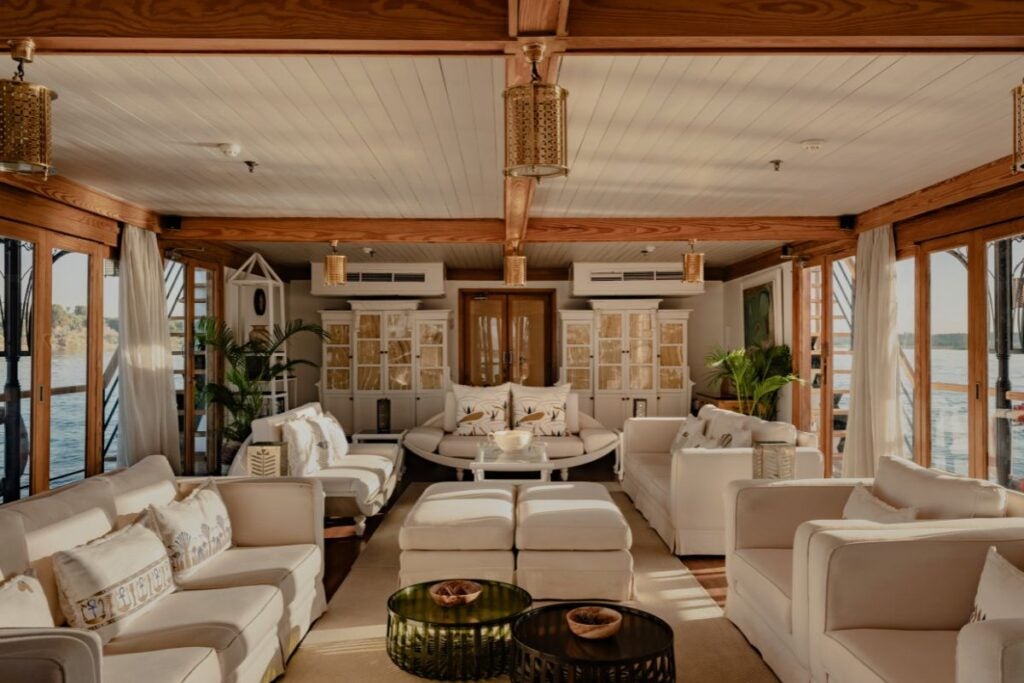
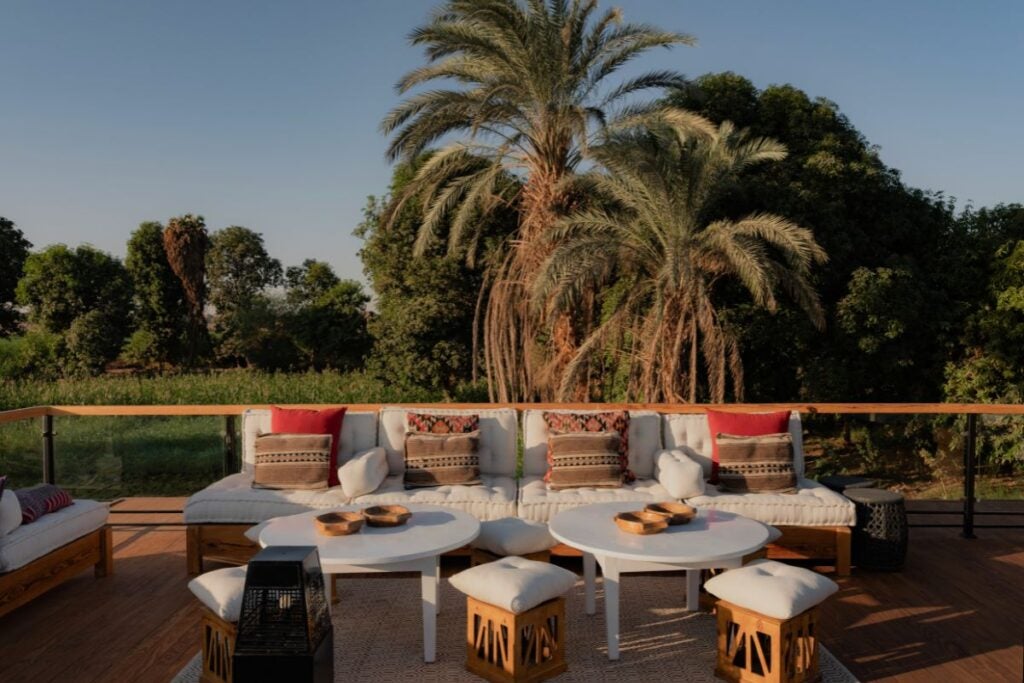
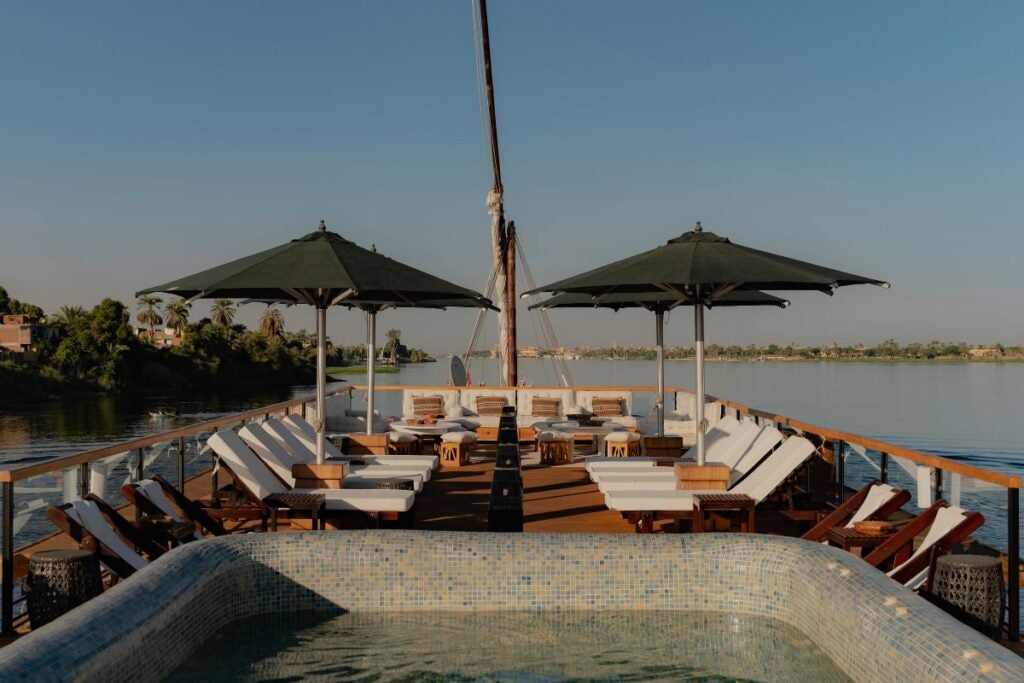
The itinerary is fully customisable and allows guests to explore some of Egypt’s most intriguing landmarks while avoiding large crowds, thanks to A&K’s use of private docks. Renowned as one of the most luxurious cruises to sail along the Nile, the boat has hosted former American presidents and Hollywood A-listers including Brad Pitt, Angelina Jolie, Salma Hayek and Naomi Campbell.
As we glide along the river’s smooth waters flanked by sloping palm trees, each temple, tomb and monument is a reminder that much of Egypt’s history is not confined to museums, but woven into the landscape itself.
And as the call to prayer rises once more in the distance, it’s clear how, even millennia later, the pursuit of eternity endures.
More information
- Prices for A&K’s ‘Petra to the Pyramids’ 13-day tour with four nights aboard the Zein Nile Chateau, An A&K Sanctuary, start at $17,495 per person.
- Full charters of the Sanctuary Zein Nile Chateau start at $33,000 for three nights.
- Website: https://www.abercrombiekent.com/
This article first appeared in Spear’s Magazine Issue 95. Click here to subscribe
